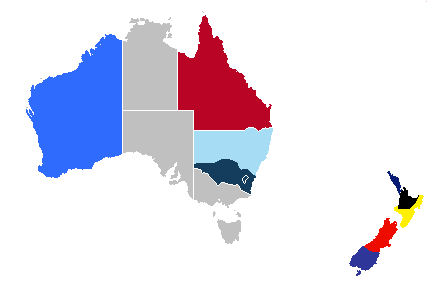Module 12: Australia and New Zealand
Section outline
-

Map_of_Australia_and_New_Zealand.png: HatGregderivative work: Hatgreg (talk)derivative work: Craig t Moore, CC BY-SA 3.0 via Wikimedia Commons
Australia and New Zealand have flora and fauna that are found nowhere else on Earth. Australia is distinctive because it is an island, a country, and a continent—the smallest of the world’s continents. No other land mass can concomitantly make those three claims. Australia consists of a large mainland and the island of Tasmania to the south. The main physical area of New Zealand, on the other hand, consists of two main islands separated from Australia’s southeastern region by the Tasman Sea.
Upon completion of this module, you will be able to:
- Summarize how colonialism has affected the development and socioeconomic conditions of Australia and New Zealand. (CLO 4)
- Determine where the Wallace Line and the Weber Line were located. Understand how isolation has allowed for the high level of biodiversity. (CLO 1 & 3)
- Outline how colonialism impacted the Maori and the Aboriginal populations. (CLO 4)
To achieve these objectives:
- Read the Module 12 Introduction
- Read Chapter #12 - Australia and New Zealand in World Regional Geography: People, Places, and Globalization.
- Complete the Module 12 Assignment, Discussion Board Posts (3), Chapter Quiz, and H5P activities
Module Pressbooks Resources and Activities
You will find the following resources and activities in this module at the Pressbooks website. Click on the links below to access or complete each item.
Background Colour
Font Face
Font Kerning
Font Size
Image Visibility
Letter Spacing
Line Height
Link Highlight
Text Colour
